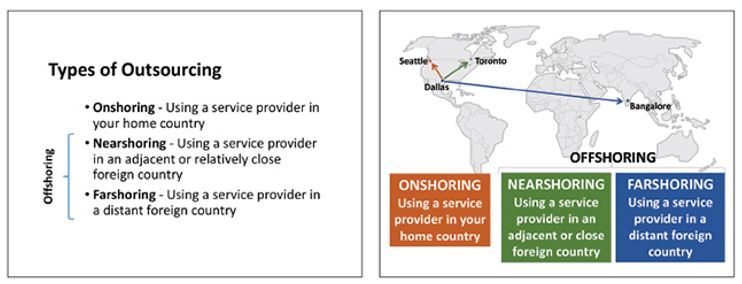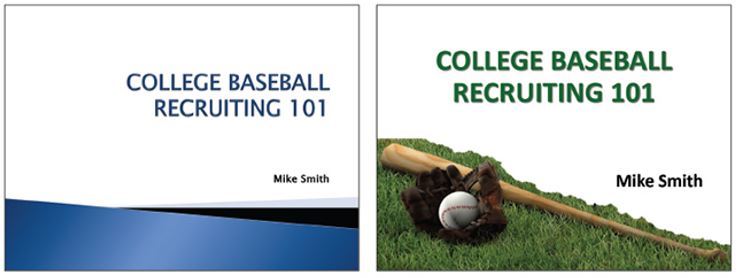Top 10 Presentation Skills to Deliver an Award Winning Presentation
M3 India Newsdesk Nov 06, 2022
Communication is a key component of a doctor's work. In this article, we’ll share 10 tips to help you improve your public speaking and presentation skills and engage an audience.
Stepping into medical college is not just about your curriculum and books, but also a lot of education and extracurricular activities which can help you escalate your resume and also help in overall personality development.
We as doctors often attend a lot of medical conferences and find a lot of our colleagues presenting their research work or reviews of literature in the form of paper and poster presentations. Making and preparing for a presentation can be quite daunting and time-consuming, but if we follow a few tips, it can actually become an award-winning one.
And who doesn’t like accolades?
Here are the top 10 tips you can implement next time you're presenting a paper or a poster at a conference.
1. Know it all or none!
In an attempt to do our best, sometimes we take up a topic which is very difficult or something which is not easy to work on in a given time frame. It is important to take up a topic which you know about completely or have the capability to understand and learn thoroughly. If not, it's better to not select it rather than presenting a half-known or under-prepared topic. While selecting a topic, always keep the following points in mind:
- Select a topic based on your intellectual and educational level. Choosing something difficult will affect the efficiency of the presentation, as you will find yourself stuck more often.
- Choose something that intrigues you. In this way, you will be more inclined and dedicated to work on this presentation.
- Try to find a novelty or uniqueness in your subject of a presentation that will take care of your audience’s attention and also give you some extra points from the judge's table.
- Consult a senior professor or a guide and work in collaboration.
2. Keep it simple
Often we see slides that are filled with extensive content and images, making them very cumbersome to read and understand. Such slides have the maximum probability of getting minimum attention and feedback.
- Focus on the key message of that particular slide and add only that in the form of words and text. Let the rest be explained by oration.
- Let there be shorter sentences and fewer paragraphs with a legible and bold font. Simple fonts like Times new roman or a simple Calibri in a size of 30 work the best.
- Focus on the overall look of the slide. If the background is dark, let the font be white or light blue. Colour balance is the key here.
- Break bigger paragraphs into bullets.
- Use more infographics rather than text.
- Having more words and text will take away your audience’s attention because as soon as you switch to a slide full of text in that tiny font size, you will find your audience has tuned out of your oration as they are busy reading that slide and trying hard to figure it out.
3. Creative slides-The best visual aid
Let's imagine sitting and hearing a presentation with slides just including data, graphs, and the same monotonous backgrounds throughout. Sounds tedious, isn’t it? And now also imagine that you are absolutely enjoying the presentation by understanding every aspect of it and assimilating all the information effortlessly.
Most definitely, the second situation sounds better and following these tips can help your audience feel the same as mentioned above.
- Present just one topic/sub-topic/idea per slide
- Convert the bullets into graphical bullet elements

- Try to replace the bullets with images and infographics

- Create original backgrounds and use images as templates

- Resize and crop images to use them creatively

- Experimenting with the colour scheme of the images

- Use more infographics instead of the text

4. Technical considerations for medical presentations
Presentations in the medical field can be based on either:
Original research work/study
In an original study, is it good to follow a basic framework which begins with:
- Introduction
- Hypothesis, novelty and rationale of the research work
- Aims and objectives
- Materials and methods, including the study procedure
- Statistical analysis and the results
- A discussion including past literature review
- Conclusion along with the limitations and future perspectives of the study
Case report/ case series
- A case report or a series should have all the demographic and medical condition details about the patient and the presentation should explain all the clinical features along with the diagnosis and the applied treatment in the case.
- A very important guideline is to avoid revealing the identity of the patient, hence it needs to be hidden.
Literature review
- A literature review should include a bundle of studies that have been done based on the same subject you have selected and it should cover a wide range of information along with appropriate referencing and proofs from where the data has been picked up.
- This type of presentation can be made more interesting by adding more relevant images.
5. How to speak is how you deliver!
After working on a bunch of creative slides and having all the data in place, it's now time to work on those communication skills. Effective communication is the key to delivering all your hard work put into the research and those slides. The most important techniques you can start with are:
Practising in front of others
We might know the topic well and we are all set with the entire oration part to be spoken off on the stage. But as we all know, stage fear can creep and the pre-presentation jitters can put you out of control. Practising in front of a group of friends or colleagues will make you more confident and help you get used to having an audience around. You will get more used to the attention of the audience and that will avoid blanking out because of the stress and fear.
Passion towards content creation
The more inclined and excited you are about your presentation, the more it will reflect in your oration and that will help you gain maximum attention from the audience
6. Eye contact is a must!
We must have heard that it is easier to look at the back of the room while presenting, as you can avoid eye contact and feel less nervous. But this is actually the most inappropriate way of dealing with this problem.
Maintaining eye contact will keep your audience more engaged and when they realise they are being noticed and their attention is being acknowledged, they are more likely to listen.
It also reflects your confidence at its best.
7. Body language matters
A powerful stance, smiling face, and positive hand gestures can be a winning game at any presentation. Walking around the stage, closer to the audience, can give them a sense of more involvement and also show the confidence you carry while delivering the presentation.
Negative hand gestures like tapping or bouncing your feet, picking on your hair, and fidgeting with your nails or clothes can distract both the audience and you and this can leave negative and under-confident feedback.
Remember, no matter how nervous you are, just take a deep breath and imagine the fact that everything is under control. After some time, you might actually start believing it and be absolutely good to go.
8. Work on your pauses
Try to maintain a uniform speed throughout the oration. Sometimes, in nervousness, we tend to speak either too fast or forget a few words and take long pauses. Speaking too fast at times in the fear of finishing earlier can cause a rush of words, and in that panic, one can get absolutely breathless and a fumble.
It's advisable to take pauses at the right time to help you gain some momentum after speaking for a long time. Also, taking pauses can be an effective tool in throwing emphasis on certain important concepts.
The best way to practice this is to time yourself every time you practice and record yourself. This can help in improvisation.
9. Voice modulation
Voice modulation can again be a powerful tool in improving the overall impact of your presentation. The benefits of voice modulation could be that it:
- Instils confidence
- Helps in overcoming stage fright
- Improves overall impact on the audience
10. What not do?
- Use of excessive animations, transitions, and sound effects.
- Use bright-coloured backgrounds and small fonts.
- Using computer-fed templates and backgrounds.
- Do not read directly from the slides.
- Not having a backup for your presentation.
- Inadequate practice sessions.
- Not giving yourself enough rest before the presentation day.
Disclaimer- The views and opinions expressed in this article are those of the authors and do not necessarily reflect the official policy or position of M3 India.
About the author of this article: Dr Ridima Surve is a practising dentist from Mumbai.
-
Exclusive Write-ups & Webinars by KOLs
-
Daily Quiz by specialty
-
Paid Market Research Surveys
-
Case discussions, News & Journals' summaries